(ZENIT News / Washington, 03.02.2025).- The COVID-19 pandemic upended nearly every aspect of daily life, and religious communities were no exception. With places of worship forced to close or significantly modify their operations, many wondered if religious practice in the United States would ever return to its pre-pandemic norms. Now, after years of restrictions and adaptation, new data from the Pew Research Center reveals a complex picture: while some aspects of worship have shifted, the overall level of religious participation in the U.S. has remained strikingly stable.
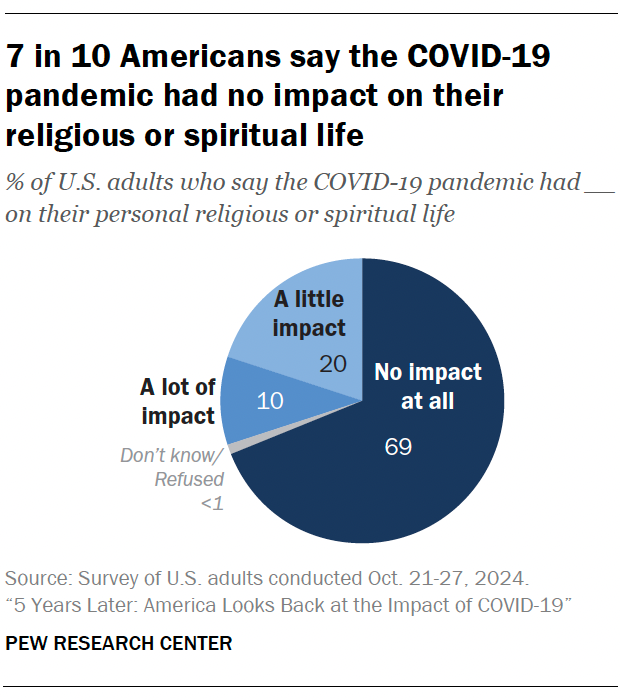
A Shift in Worship Habits, but Not in Religious Identity
In the early months of the pandemic, in-person worship all but disappeared. By mid-2020, only 6% of Americans who regularly attended religious services reported that their places of worship remained open without restrictions. The majority either had no access to in-person services or faced significant limitations designed to curb the spread of the virus. By 2022, many places of worship had resumed normal operations, yet nearly 60% of regular attendees noted that some level of restriction remained in place.
Despite these disruptions, most Americans report that their personal religious or spiritual lives were largely unaffected by the pandemic. By 2024, only 10% of U.S. adults said COVID-19 had significantly impacted their faith, while 69% stated it had no effect at all. Even among those who acknowledged an impact, opinions were evenly split—some felt the changes were positive, others negative, and a sizable portion remained neutral.
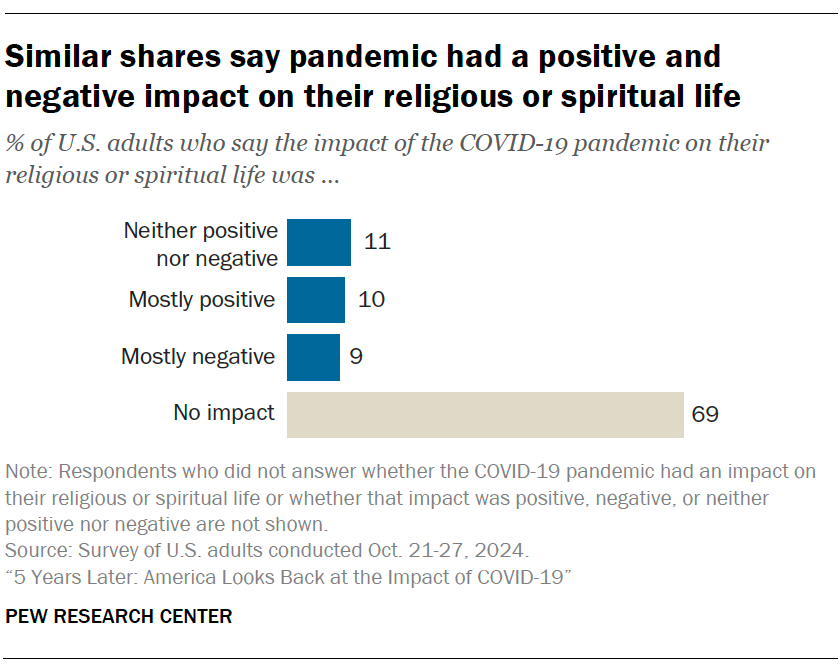
The Rise and Decline of Virtual Worship
One of the most noticeable transformations during the pandemic was the shift to virtual worship. As churches, mosques, synagogues, and temples closed their doors, many turned to livestreaming services online or broadcasting them on television. This digital adaptation allowed congregations to stay connected, and at its peak, virtual participation rivaled in-person attendance.
However, as pandemic fears subsided, the pendulum swung back. By late 2024, the percentage of Americans watching religious services online had declined, while in-person attendance had slowly rebounded. Still, the overall participation rate—whether virtual, in-person, or both—remained consistent at around 40%, suggesting that those who were engaged in religious practice before the pandemic found ways to continue, regardless of format.
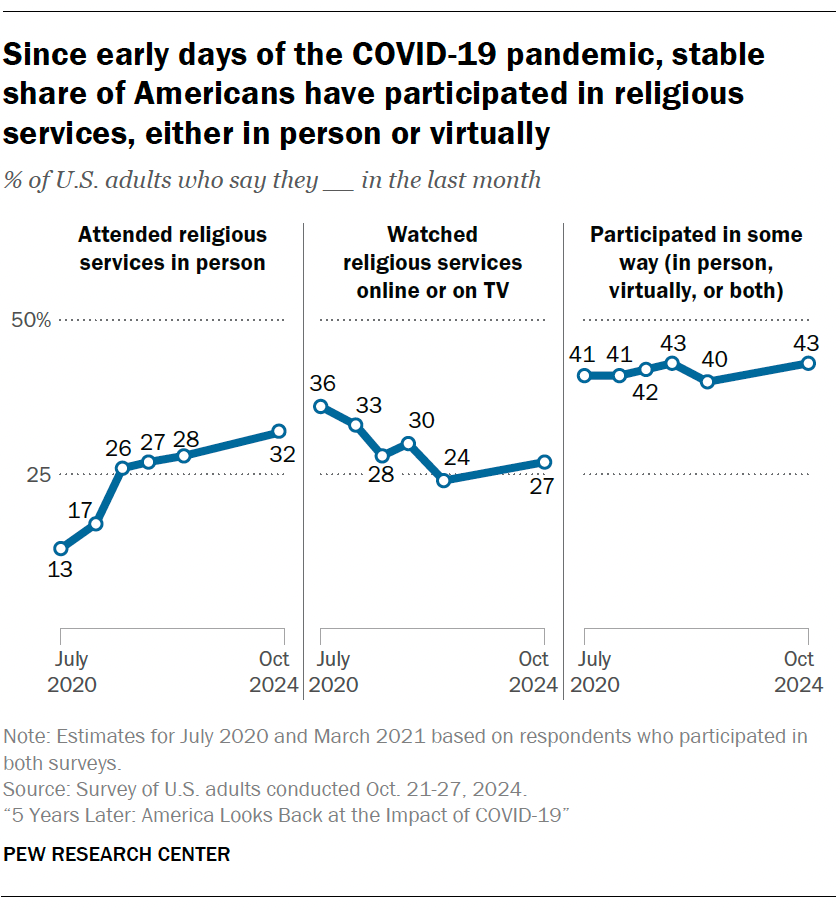
Who Was Most Affected?
While most Americans reported little to no impact on their religious lives, certain communities experienced more pronounced effects. Black Protestants and Hispanic Catholics were among the groups most likely to say the pandemic influenced their faith in some way, with nearly half acknowledging at least a minor impact. Similarly, racial and ethnic differences emerged more broadly: Black, Hispanic, and Asian Americans were significantly more likely than white Americans to say that COVID-19 had changed their spiritual or religious perspectives.
Interestingly, within these groups, interpretations of the pandemic’s impact varied. Black Protestants, for example, were more likely to describe the experience as spiritually enriching rather than damaging. In contrast, white Catholics were more likely to say the pandemic had negatively affected their religious lives.
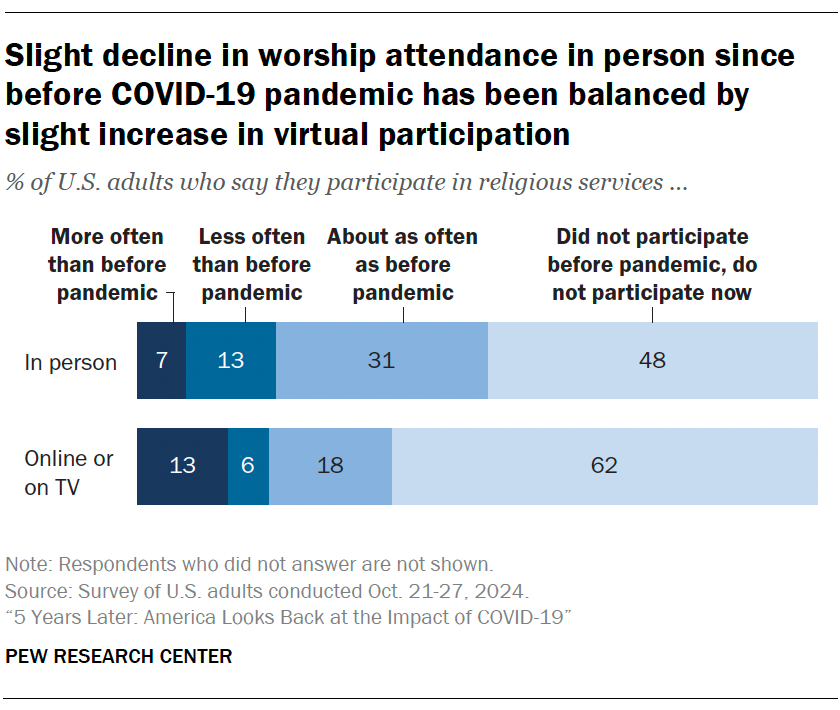
A Generational Divide in Religious Participation
Age also played a role in shaping pandemic-era religious habits. Among younger adults (18–29 years old), religious participation fluctuated dramatically, dipping to 28% at its lowest point and rising to 38% in more recent surveys. Although these numbers indicate a temporary increase in engagement, younger Americans still participate in religious services far less frequently than older generations, continuing a long-standing trend that predates the pandemic.
A different pattern emerged among Jewish respondents. Their reported levels of religious service attendance spiked in late 2022 and 2024, likely due to the timing of the surveys, which coincided with the High Holy Days of Rosh Hashanah and Yom Kippur—periods of peak synagogue attendance.
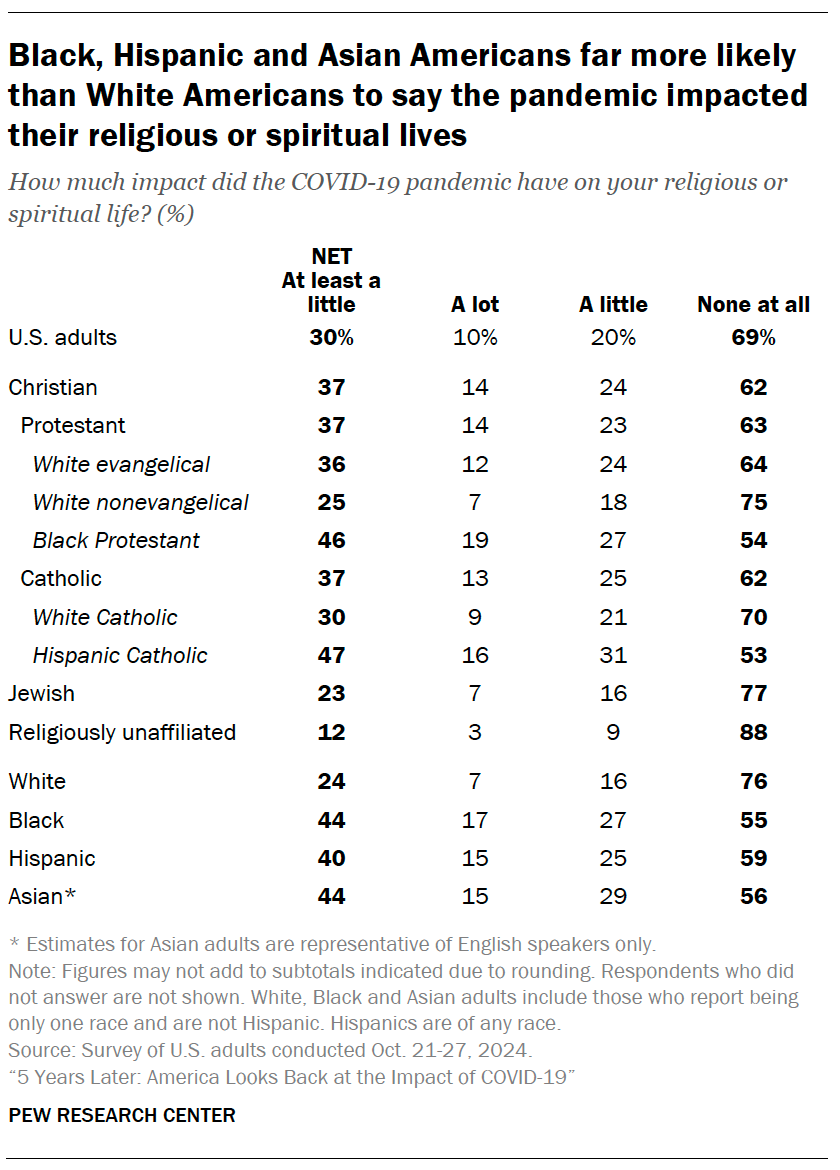
The Future of Religious Engagement in the U.S.
While some observers predicted that the pandemic might trigger a lasting decline in religious participation, the data suggests otherwise. Instead, the pandemic reinforced long-standing patterns: those who were religiously active before COVID-19 found ways to remain engaged, while those who were not did not suddenly seek out faith-based communities.
Thank you for reading our content. If you would like to receive ZENIT’s daily e-mail news, you can subscribe for free through this link.



